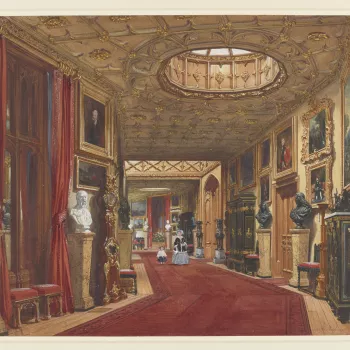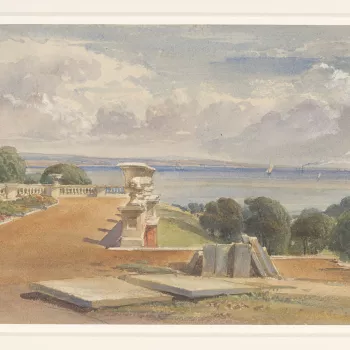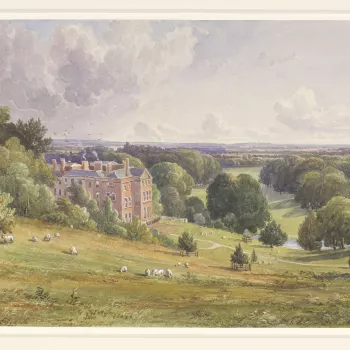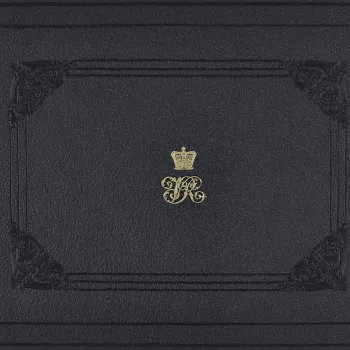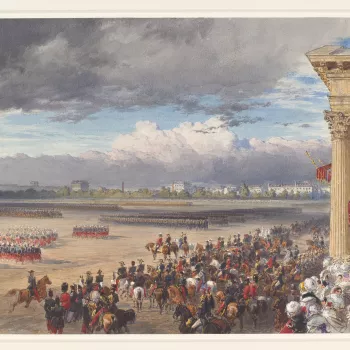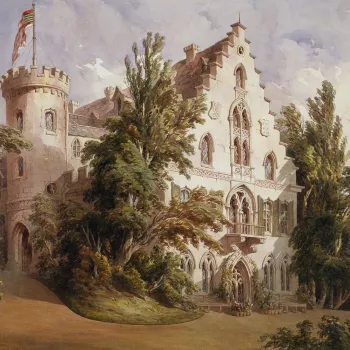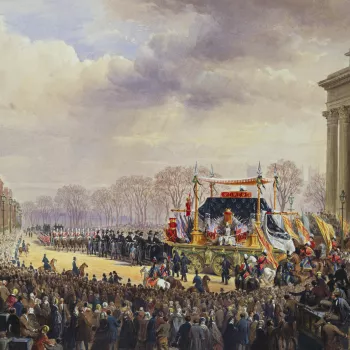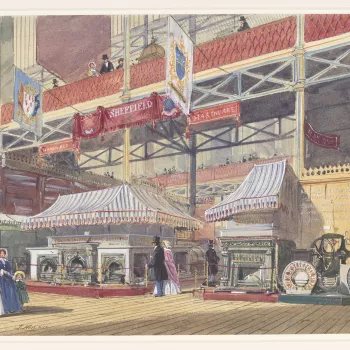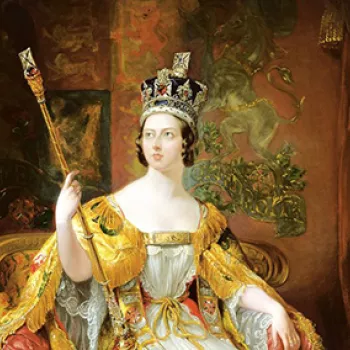
The Exhibition
Queen Victoria (1819–1901) and Prince Albert (1819–61) spent many happy evenings together compiling albums of watercolours, prints and photographs. Among these were nine volumes which Victoria described as ‘My valuable Albums ... containing most beautiful water color paintings by the first Artists, and some by Amateurs, collected by my beloved Husband & myself, and representing the different places we visited & scenes of our life etc; arranged by my dearly beloved Husband.’ Many of the works in this exhibition were originally mounted in these very personal albums.
The royal couple collected watercolours in different ways – commissioning them directly, purchasing them at exhibitions and receiving them as gifts. Some they exchanged as presents for birthdays or at Christmas. Both Victoria and Albert were enthusiastic patrons, and demonstrated great interest in the process of artistic creation. The Queen was a proficient amateur watercolourist, and took lessons with some of the artists whose works the couple collected.
The watercolours on display here give us an insight into the private and public lives of Victoria and Albert. These colourful and dynamic works capture the pomp and spectacle of the British court, the exploration and shaping of a modern nation, foreign travel and diplomacy, and the close-knit family at the heart of it all.



